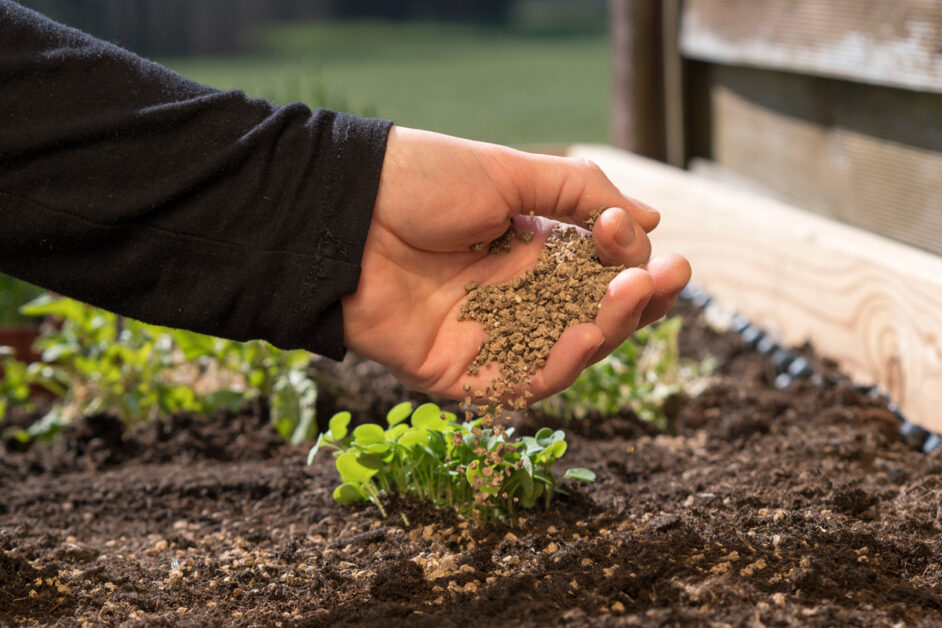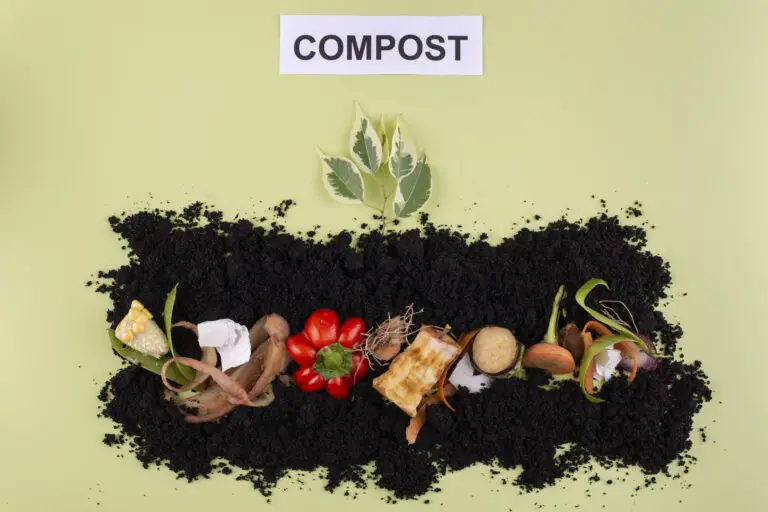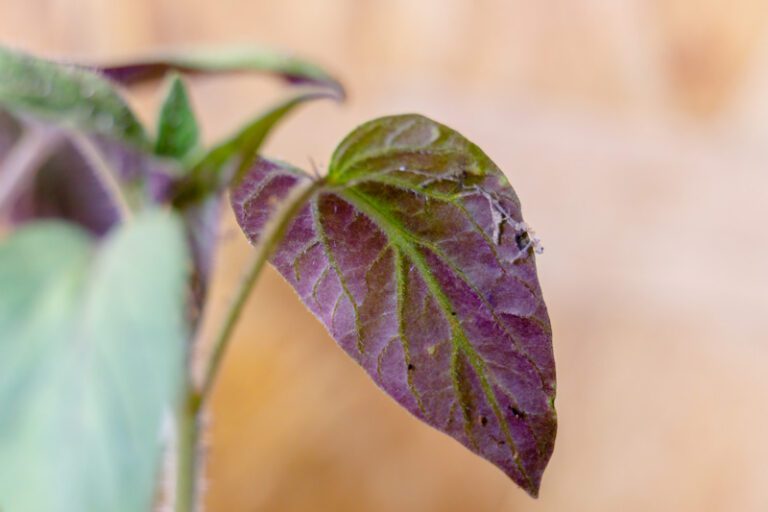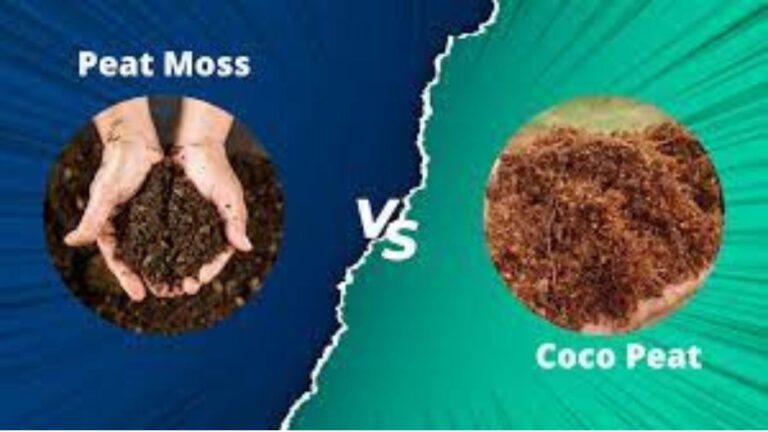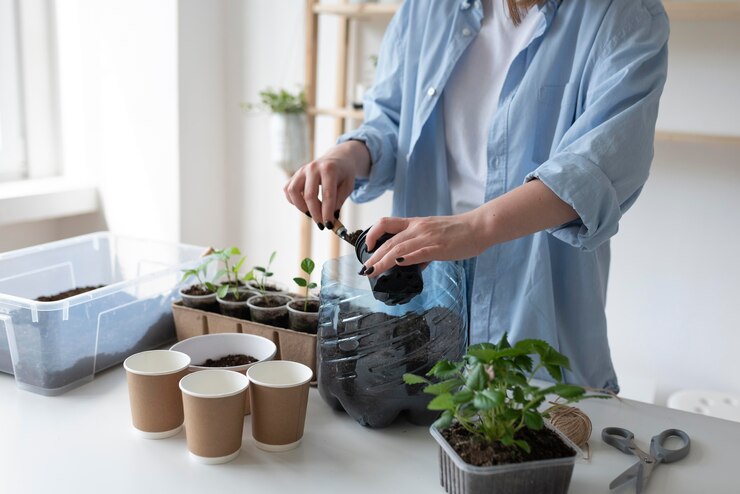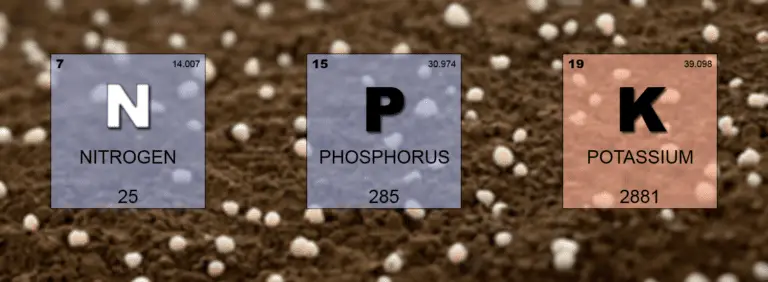How to Use Bone Meal: A Natural Fertilizer for Your Plants
Table of Contents
Using Bone Meal as a Soil Amendment for Optimal Plant Growth
Bone meal is a highly effective soil amendment that can significantly enhance plant growth and overall soil health. Derived from the ground-up bones of animals, bone meal is rich in essential nutrients such as nitrogen, phosphorus, and calcium, making it an excellent choice for promoting optimal plant development. When applied to the soil, bone meal slowly releases these nutrients over time, providing a steady supply that plants can easily absorb.
One of the key benefits of using bone meal as a soil amendment is its ability to boost root development. The phosphorus content in bone meal stimulates root growth, enabling plants to establish a strong foundation and take up water and nutrients more efficiently. Additionally, the high calcium content in bone meal helps plants develop strong cell walls, leading to improved overall plant structure and resilience.
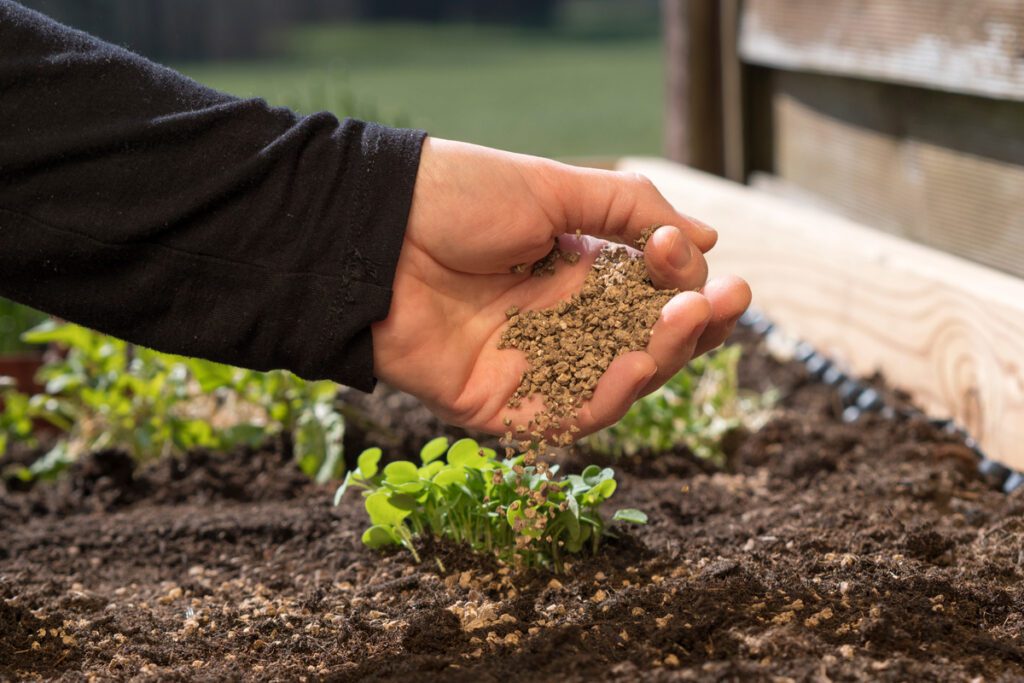
To apply bone meal as a soil amendment, begin by preparing your garden beds. Clear away any debris or weeds and loosen the top layer of soil to ensure good root penetration. Spread a layer of bone meal evenly over the bed, taking care to avoid directly contacting plant roots. Gently incorporate the bone meal into the soil, either by lightly raking it in or mixing it thoroughly with a garden fork. Finally, water the bed thoroughly to activate the nutrients and help them start working their magic.
When it comes to using bone meal, there are a few precautionary measures to keep in mind. While bone meal is a fantastic fertilizer for most plants, it is not suitable for acid-loving plants such as azaleas and rhododendrons, as the high phosphorus content can interfere with their nutrient uptake. It’s also crucial to follow the recommended dosage instructions, as excessive application of bone meal can lead to nutrient imbalances and other plant health issues. Lastly, remember that bone meal is a slow-release fertilizer, so it may take some time to see the full effects. Be patient and allow the nutrients to work their way into the soil and plants over time.
Understanding the Composition and Nutritional Content of Bone Meal
Bone meal is a popular soil amendment used by gardeners and plant enthusiasts to enhance the nutrient content of their soil and promote optimal plant growth. It is made from ground-up animal bones, typically sourced from meat processing plants or livestock farms. This natural and organic fertilizer is rich in essential nutrients such as nitrogen, phosphorus, and calcium, which are vital for plant development.
The composition of bone meal can vary depending on the source and processing methods used. However, it generally contains high levels of phosphorus, making it an excellent choice for plants that require phosphorus-rich soil. Phosphorus is an essential nutrient for promoting healthy root development, enhancing flowering and fruiting, and overall plant vigor. Apart from phosphorus, bone meal also contains smaller amounts of nitrogen and calcium, which further contribute to plant growth and health. The calcium content in bone meal can also help balance soil pH levels and improve overall soil structure.
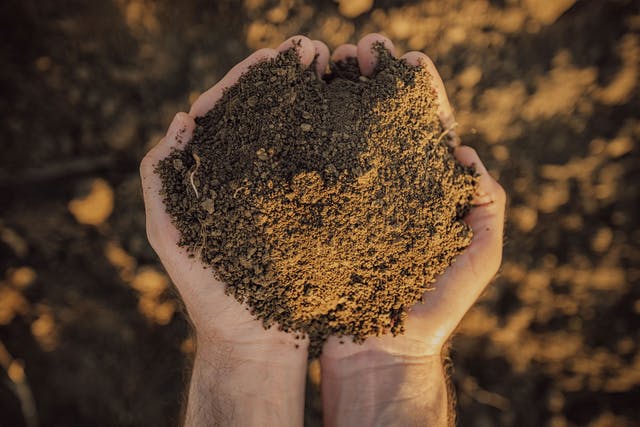
When using bone meal as a soil amendment, it is important to consider the nutritional requirements of your specific plants. Different plants have varying needs when it comes to nutrients, so it is essential to tailor your application rates accordingly. Some plants, such as flowering perennials or fruit-bearing trees, may benefit from higher amounts of phosphorus, while others may require a more balanced nutrient ratio. Understanding the nutritional content of bone meal allows you to make informed decisions about its application and ensure that your plants receive the right nutrients for optimal growth.
Preparing Your Garden Beds for Bone Meal Application
Preparing your garden beds for bone meal application is an essential step to ensure optimal plant growth and maximize the benefits of this soil amendment. Before adding bone meal to your garden, it is important to assess the nutrient needs of your plants and understand the composition and nutritional content of bone meal.
First, take a close look at your garden beds and consider the specific needs of the plants you are growing. Are they heavy feeders that require a lot of nutrients, or are they more delicate and sensitive to excessive fertilization? Understanding the nutrient requirements of your plants will help you determine the appropriate amount of bone meal to apply.
Next, it is advisable to test your soil before applying bone meal. A soil test will provide you with valuable information about the pH level and nutrient deficiencies in your soil. This will allow you to make any necessary adjustments to ensure a proper balance of nutrients for your plants.
Once you have analyzed your soil, you can prepare your garden beds for bone meal application by incorporating it into the soil. Start by loosening the soil with a garden fork or tiller, ensuring that it is well-drained and free from weeds. This will create a favorable environment for the bone meal to integrate into the soil and be readily available to your plants’ roots.
When applying bone meal, it is important to follow the recommended dosage instructions provided by the manufacturer. As a general guideline, a typical application rate is about 10 to 20 pounds of bone meal per 100 square feet of garden bed. However, be cautious not to over-apply, as excessive amounts of bone meal can lead to nutrient imbalances or even damage to your plants.
Gently work the bone meal into the soil using a rake or garden cultivator, ensuring an even distribution throughout the garden bed. Take care to avoid direct contact between the bone meal and plant roots, as it may cause burning or other adverse effects. Finally, water the area thoroughly to help the bone meal settle into the soil and activate its beneficial properties.
By properly preparing your garden beds for bone meal application, you can create a fertile environment that promotes optimal plant growth. Remember to assess your plants’ nutrient needs, conduct a soil test, and follow the recommended dosage instructions. With these steps, you will be on your way to reaping the benefits of bone meal and enjoying healthier, more robust plants in your garden.
Applying Bone Meal to Potted Plants: Best Practices
When it comes to potted plants, providing the right nutrients is crucial for their overall health and growth. One effective way to boost nutrient levels in potted plants is by applying bone meal. Bone meal is a natural fertilizer derived from animal bones, and it is rich in phosphorus, calcium, and other essential minerals that plants need for optimal development.
To apply bone meal to potted plants, start by choosing a high-quality organic bone meal product from a reputable supplier. Look for a product that is finely ground to ensure easy absorption by the roots. Before applying the bone meal, water your plants thoroughly to ensure that the soil is moist. This will help the nutrients to evenly distribute throughout the soil. Then, sprinkle the recommended amount of bone meal onto the surface of the soil, taking care not to exceed the recommended dosage. Gently work the bone meal into the top few inches of soil, being careful not to damage the roots. Lastly, water the plants again to help the bone meal settle into the soil.

Applying bone meal to potted plants provides several benefits. Firstly, the phosphorus and calcium in bone meal promote strong root development, which is vital for the overall health and stability of the plants. Additionally, bone meal aids in the production of vibrant flowers and fruits by encouraging robust flowering and fruiting processes. Moreover, the slow-release nature of bone meal ensures a steady supply of nutrients over time, reducing the need for frequent fertilization. Overall, incorporating bone meal into your potted plant care routine can significantly enhance the growth and vitality of your plants.
Using Bone Meal for Seed Starting and Transplanting
Seed starting and transplanting are critical stages in the life cycle of plants, and using bone meal as a soil amendment can greatly enhance their success. Bone meal is a natural and organic fertilizer derived from animal bones, typically from cows or fish. It is rich in essential nutrients like phosphorus, calcium, and nitrogen, which are vital for healthy growth and development.
When starting seeds, incorporating bone meal into the potting mix helps provide a nutrient-rich environment for germination. The phosphorus in bone meal aids in root development and promotes strong, healthy seedlings. Additionally, the calcium content helps prevent blossom end rot in young plants. Simply mix a tablespoon of bone meal into each cup of potting mix, ensuring proper distribution and avoiding direct contact with the seeds.
Similarly, when transplanting seedlings into the garden, bone meal can be applied directly to the planting hole. The high phosphorus content in bone meal stimulates root growth and improves overall plant establishment. Ensure the bone meal is well-mixed with the surrounding soil to prevent direct contact with the roots, which can potentially cause damage. A general guideline is to use a tablespoon of bone meal per square foot of planting area, adjusting the amount based on the specific needs of the plants being transplanted.
It is important to note that not all plants may require bone meal supplementation during seed starting and transplanting. Some species are more sensitive to high phosphorus levels, such as certain varieties of succulents or acid-loving plants like blueberries. Therefore, it is advisable to research the specific nutritional requirements of each plant and consult gardening references or experts when in doubt.
In summary, incorporating bone meal into the soil during seed starting and transplanting can provide essential nutrients for healthy plant growth. However, it is crucial to consider the nutritional needs of different plants and avoid over-application of bone meal. Taking these factors into account will help maximize the benefits of using bone meal as a soil amendment during these critical stages of plant development.
Enhancing Flowering and Fruiting with Bone Meal Fertilizer
Enhancing the flowering and fruiting of plants is a common goal for many gardeners and plant enthusiasts. One effective way to achieve this is by using bone meal fertilizer. Bone meal is a natural product that is made from ground-up animal bones, and it is rich in phosphorus, calcium, and other essential nutrients that promote healthy growth and development.
Phosphorus is a vital element for plants, especially during the flowering and fruiting stages. It plays a key role in energy transfer, root development, and flower and fruit formation. By incorporating bone meal into your gardening routine, you can provide a steady supply of phosphorus to your plants, enhancing their ability to produce vibrant flowers and abundant fruits.
In addition to phosphorus, bone meal also contains calcium, which is essential for plant growth and overall health. Calcium helps strengthen cell walls, improves nutrient uptake, and promotes proper enzyme activity. As a result, plants supplemented with bone meal are better equipped to handle stress, such as extreme temperatures or disease, allowing them to focus their energy on producing beautiful blooms and bountiful harvests.
Promoting Strong Root Development with Bone Meal
Bone meal is a versatile soil amendment that can greatly enhance root development in plants. The high phosphorus content of bone meal is essential for promoting strong and healthy root systems. Phosphorus plays a crucial role in stimulating root growth, as it aids in the production of adenosine triphosphate (ATP), which is the energy currency of cells.
When using bone meal to promote strong root development, it is important to follow certain guidelines. Firstly, it is important to choose the right type of bone meal that suits your plants’ needs. There are different variations of bone meal available, such as powdered, granular, and liquid forms. Each form has its own advantages and disadvantages, so it is important to consider factors like ease of application, nutrient release rate, and compatibility with your growing medium.
| Aspect | Recommendations |
|---|---|
| Bone Meal Application | Apply bone meal to the soil during planting or transplanting to provide a slow-release source of phosphorus, essential for root development. |
| Proper Mixing | Ensure thorough mixing of bone meal with the soil to guarantee uniform distribution of nutrients and maximize root access to phosphorus. |
| Dosage Guidelines | Follow recommended dosage guidelines based on plant type and size to prevent over-fertilization and minimize the risk of nutrient imbalance. |
| Application Timing | Apply bone meal early in the growing season to support initial root establishment and periodically throughout the plant’s life for sustained benefits. |
| Incorporation in Planting Hole | Incorporate bone meal into the planting hole or mix it with backfill soil when transplanting to provide direct contact with developing roots. |
| Watering Practices | Water the soil thoroughly after bone meal application to aid in nutrient absorption and to prevent any potential burn from concentrated fertilizer. |
| Soil Testing | Conduct soil tests periodically to assess nutrient levels and adjust bone meal application accordingly, ensuring optimal conditions for root growth. |
| Mulching Benefits | Use organic mulch around plants to conserve moisture, regulate soil temperature, and enhance the effectiveness of bone meal in promoting root health. |
| Avoiding Excess Salinity | Be cautious with the use of bone meal in saline or alkaline soils to prevent the accumulation of excess salts, which may hinder root development. |
| Monitoring Plant Response | Regularly monitor plant growth and health to gauge the effectiveness of bone meal, making adjustments as needed based on observed results. |
Secondly, the application method is crucial for achieving optimal results. Bone meal can be applied as a top dressing by evenly spreading it around the base of the plant, or it can be mixed into the soil before planting. This allows the nutrients to gradually release and be readily available to the roots. It is important to avoid excessive application, as this can lead to nutrient imbalances and potential damage to the plants. Consulting the packaging instructions or seeking advice from a horticulture specialist can provide valuable guidance on the appropriate dosage and application frequency.
By incorporating bone meal into your gardening routine, you can ensure that your plants develop robust root systems that are capable of absorbing nutrients efficiently. With healthy roots, plants are better equipped to withstand environmental stressors and support lush foliage and abundant blooms. Stay tuned for more in-depth information on using bone meal for different plant types and the dos and don’ts of its application.
Dos and Don’ts of Using Bone Meal for Different Plant Types
When it comes to using bone meal as a soil amendment for different plant types, there are some important dos and don’ts to keep in mind. While bone meal can provide valuable nutrients to support healthy plant growth, it’s important to understand how to use it properly to avoid any potential harm.
Firstly, do make sure to follow the recommended application rates for each specific plant type. Different plants have different nutrient requirements, and using too much bone meal can actually have negative effects on their growth. Consult reputable gardening resources or product labels to determine the correct amount of bone meal to use for each plant.
Additionally, it is important to incorporate bone meal into the soil properly. Thoroughly mix it into the soil before planting or top-dress established plants, ensuring that it is evenly distributed. This will help to provide a consistent nutrient supply to the plants and avoid any potential nutrient imbalances.
On the other hand, one important don’t when using bone meal is to avoid applying it directly to the roots of sensitive or young plants. Bone meal contains phosphorus, which in high concentrations can be damaging to sensitive plant tissues. Instead, apply bone meal as a soil amendment before planting or work it into the top layer of soil around established plants.
Another don’t to keep in mind is to avoid using bone meal as the sole source of nutrients for your plants. While bone meal is a valuable source of phosphorus, it may not provide all the necessary nutrients for optimal plant growth. Supplementing bone meal with other fertilizers or organic matter, such as compost, can help ensure that your plants receive a well-rounded nutrient supply.
By following these dos and don’ts, you can effectively use bone meal as a soil amendment for different plant types and promote healthy plant growth in your garden. Remember to always consult reputable gardening resources and product labels for specific guidelines and recommendations.
Using Bone Meal as a Long-Term Soil Conditioner
Using bone meal as a long-term soil conditioner is a tried-and-true method to improve the overall health and fertility of your garden soil. Bone meal is a natural and organic fertilizer made from ground-up animal bones, typically sourced from livestock or fish processing plants. Its primary benefits lie in its high phosphorus content, which plays a crucial role in promoting root development, flower and fruit formation, and overall plant vigor.
One of the key advantages of using bone meal as a long-term soil conditioner is its slow-release nature. Unlike synthetic fertilizers that provide an immediate burst of nutrients to plants, bone meal releases its phosphorus gradually over time. This slow-release mechanism ensures a steady supply of essential nutrients for your plants, promoting healthy growth without the risk of nutrient burn or leaching. This makes bone meal particularly well-suited for long-term plantings, such as perennial beds, shrubs, and fruit trees.
However, it is important to note that bone meal is not a one-size-fits-all solution. Before incorporating bone meal into your gardening routine, it is essential to understand the specific nutrient needs of your plants and the composition of your soil. Conducting a soil test can provide valuable insights into the existing nutrient levels and pH of your soil, allowing you to make informed decisions about the required amendments. Additionally, it’s worth considering other nutrient sources, such as compost or organic matter, to ensure a well-rounded nutrient profile for your plants. By tailoring your approach to the unique needs of your garden, you can maximize the benefits of using bone meal as a long-term soil conditioner.
Remember to consult your local extension service or gardening experts for specific guidance on the appropriate amount and frequency of bone meal application for your particular plant species. Properly utilizing bone meal as a long-term soil conditioner can lead to healthier plants, improved yield, and a thriving garden for years to come. So, take the time to understand the needs of your plants and invest in the long-term health of your soil – your plants will thank you for it.
Factors to Consider When Choosing Bone Meal Fertilizer
Factors to Consider When Choosing Bone Meal Fertilizer
When selecting bone meal fertilizer for your garden or potted plants, there are several important factors to consider. Understanding these factors will help you make an informed decision and ensure optimal plant growth.
One crucial aspect is the source of the bone meal. Different types of bones can be used to produce bone meal, including beef, poultry, and fish bones. Each type has its own nutrient profile, so it’s essential to choose a bone meal fertilizer that aligns with the specific needs of your plants. For example, fish bone meal is rich in phosphorus, nitrogen, and calcium, making it a great choice for flowering and fruiting plants. On the other hand, poultry bone meal provides a balanced nutrient composition for overall plant growth. Consider the specific requirements of your plants to select the most suitable bone meal fertilizer.
Another factor to consider is the process of manufacturing the bone meal. The quality of the bone meal can vary depending on the production method. Look for bone meal that has been finely ground to ensure optimal nutrient release and absorption by the plants’ roots. It’s also worth checking if the bone meal has been organic-certified, as this guarantees that it’s free from synthetic chemicals and pesticides. Additionally, reputable manufacturers often conduct quality control tests on their products, which can provide further reassurance about the fertilizer’s effectiveness.
Alternative Uses of Bone Meal in Gardening and Landscaping
Bone meal is not only a valuable soil amendment for promoting plant growth but also finds alternative uses in gardening and landscaping. One of the key benefits of bone meal is its ability to act as a natural deterrent for pests and rodents. Its high phosphorus content not only improves the health of plants but also creates an unfavorable environment for pests, protecting your garden from potential damage.
Additionally, bone meal can be used as a rooting hormone to propagate cuttings and promote root development in plants. Its organic composition makes it a safe and effective option for creating healthy root systems, helping your plants establish and thrive. By applying bone meal directly to the base of the cutting or mixing it with the soil, you can enhance the success rate of propagation and ensure the overall health of your plants.
In hydroponics and container gardening, bone meal can be utilized as a slow-release fertilizer for long-term nutrient supply. As it breaks down gradually in the growing medium, it provides a consistent source of phosphorus and calcium, essential for plant development. This makes bone meal an excellent choice for sustenance in systems where regular fertilization might be challenging or impractical. When used in combination with other nutrient solutions, bone meal can help achieve optimal growth and productivity. However, it’s important to monitor nutrient levels regularly to avoid any imbalances or deficiencies.
With its versatile benefits, bone meal proves to be a valuable asset in gardening and landscaping, extending beyond its role as a soil amendment. Its ability to deter pests, enhance rooting, and support nutrient supply makes it a valuable resource for both beginner and experienced gardeners. By exploring its alternative uses, you can make the most of this organic compound and optimize the health and vitality of your plants.
Common Mistakes to Avoid When Using Bone Meal
One common mistake to avoid when using bone meal as a soil amendment is over-application. While bone meal is beneficial for plants due to its high phosphorus content, applying too much can have negative consequences. Excessive amounts of phosphorus can lead to an imbalance in the soil’s nutrient composition, causing other essential elements like nitrogen and potassium to become deficient. It is important to follow the recommended application rates for bone meal based on the type of plant, as specified on the packaging or in gardening guides. This will help ensure that your plants receive the right amount of phosphorus without disrupting the overall nutrient balance.
Another mistake to avoid is applying bone meal to plants that do not require additional phosphorus. Some plants, such as legumes and certain tropical shrubs, have the ability to fix atmospheric nitrogen and do not rely heavily on phosphorus for growth. Adding bone meal to the soil in these cases may lead to an unnecessary accumulation of phosphorus, which could be detrimental to the plants and the environment. It is crucial to understand the specific nutritional needs of the plants in your garden and apply bone meal only when it is necessary. Conducting a soil test before adding any amendments can provide valuable information about the nutrient profile of your soil and guide your fertilizer choices. Remember that a balanced and targeted approach to nutrient management will result in healthier plants and a more sustainable gardening practice.
Understanding the Environmental Impact of Bone Meal
Bone meal is a widely used soil amendment in gardening and plant cultivation due to its high phosphorus content, which promotes healthy root development, flowering, and fruiting. However, it is crucial to understand the potential environmental impact of using bone meal to ensure sustainable gardening practices.
One of the primary concerns regarding the environmental impact of bone meal is its potential contribution to water pollution. When bone meal is applied to the soil, rain or irrigation can cause the phosphorus to leach into nearby water sources such as rivers and lakes. This excessive phosphorus runoff can lead to eutrophication, a process where water bodies become enriched with nutrients, resulting in the proliferation of harmful algal blooms and the decline of aquatic ecosystems. To minimize this impact, it is essential to follow proper application guidelines, such as applying bone meal sparingly and avoiding excessive irrigation or heavy rainfall periods.
Another aspect to consider is the source of the bone meal itself. While bone meal is traditionally produced from animal bones, there are alternative sources available, such as plant-based bone meal made from agricultural waste or soybean meal. These plant-based alternatives offer a more sustainable option, as they utilize renewable resources and reduce reliance on animal-derived products. By choosing environmentally friendly alternatives, gardeners can effectively reduce the environmental impact associated with bone meal applications.
Understanding and being mindful of the potential environmental impact of bone meal is essential for practicing sustainable gardening. By following proper application techniques and considering alternative options, gardeners can enjoy the benefits of bone meal while minimizing the negative effects on the environment.
Tips for Storing and Handling Bone Meal Safely
Storing and handling bone meal safely is essential to ensure its effectiveness as a soil amendment and to prevent any potential hazards. Here are some important tips to keep in mind:
1. Storage: Store bone meal in a cool, dry place away from direct sunlight. Moisture can cause clumping and reduce its efficacy. It is recommended to keep it in a tightly sealed container to protect it from pests and rodents. Check the expiration date on the package and discard any outdated bone meal.
2. Handling: When handling bone meal, it is important to wear gloves and a dust mask to avoid any contact with your skin or inhalation of the fine particles. If any comes in contact with your skin, wash the area thoroughly with soap and water. Avoid touching your face, especially your eyes, while using bone meal.
3. Mixing: When incorporating bone meal into your soil, avoid creating dust by using gentle mixing techniques. You can wear a mask to further protect yourself from breathing in any fine particles. It is advisable to work in a well-ventilated area to minimize exposure.
4. Children and Pets: Keep bone meal out of the reach of children and pets. It is not meant for consumption and can be harmful if ingested. Store it in a secure place where curious hands and paws cannot access it.
By following these tips, you can ensure the safe storage and handling of bone meal, promoting a healthy gardening experience. Remember, safety should always be a priority when working with any type of gardening product.
Monitoring and Adjusting Nutrient Levels with Bone Meal
Monitoring and adjusting nutrient levels in your garden is crucial for maintaining healthy plant growth and maximizing yields. With the use of bone meal as a soil amendment, it’s important to understand how to monitor and adjust nutrient levels effectively.
One key aspect of monitoring nutrient levels is testing the soil regularly. Soil testing provides valuable information about the nutrient content and pH level of your soil. By identifying any deficiencies or imbalances, you can tailor your fertilization approach accordingly. There are different soil testing methods available, including at-home testing kits and professional laboratory analysis. Whichever method you choose, make sure to follow the instructions carefully and collect representative soil samples from various areas of your garden.
Once you have the soil test results in hand, you can determine the specific nutrient needs of your plants. Bone meal is primarily known for its high phosphorus content, which is essential for root development and flower production. However, it’s important to consider the overall nutrient balance, as excessive phosphorus can inhibit the uptake of other essential nutrients. This is particularly important for plants that have specific nutrient requirements, such as acid-loving plants that thrive in more acidic soil conditions. Adjusting nutrient levels can be done through the selection of appropriate fertilizers or soil amendments, based on the specific needs of your plants. Regular monitoring and adjustment of nutrient levels will ensure that your plants receive the optimal nutrition they need for healthy growth and abundant harvests.
How often should I monitor and adjust nutrient levels with bone meal?
It is recommended to monitor nutrient levels every 4-6 weeks and adjust accordingly based on the specific needs of your plants.
Can bone meal be used for all types of plants?
Bone meal can be used for a wide range of plants, including vegetables, fruits, flowers, and trees. However, it is important to consider the specific nutrient requirements of each plant before applying bone meal.
How much bone meal should I apply to my garden beds or potted plants?
The amount of bone meal to apply depends on the size of your garden beds or potted plants. Generally, a recommended dosage is 1-3 tablespoons per square foot for garden beds and 1-2 tablespoons per gallon of potting soil for potted plants.
Can bone meal replace other types of fertilizers?
While bone meal is a valuable source of nutrients, it may not provide all the necessary elements needed for optimal plant growth. It is best to use bone meal in conjunction with other fertilizers to ensure a balanced nutrient profile for your plants.
Are there any risks or precautions when using bone meal?
Bone meal is generally safe to use, but it is important to wear gloves and a mask when handling it to avoid inhalation or skin contact. Additionally, avoid applying bone meal directly to plant roots to prevent burning.
How long does it take for bone meal to release nutrients into the soil?
Bone meal is a slow-release fertilizer, meaning it gradually releases nutrients over time. Typically, it takes several months for the nutrients in bone meal to become available to plants.
Can bone meal be used for organic gardening?
Yes, bone meal is considered an organic fertilizer and is allowed for use in organic gardening practices. However, it is always important to check and follow the guidelines of organic certification programs.
What if I overapply bone meal to my plants?
Overapplication of bone meal can lead to excessive nutrient levels, which may harm your plants. If you accidentally overapply bone meal, flush the soil with water to dilute the excess nutrients.
Can bone meal attract pests or rodents to my garden?
Bone meal may attract pests or rodents if not properly stored. Ensure that bone meal is stored in sealed containers to prevent access by pests. Additionally, avoid applying bone meal near areas where pests are known to frequent.
Is bone meal suitable for indoor plants?
Yes, bone meal can be used for indoor plants. However, due to its strong odor, it is recommended to apply bone meal in well-ventilated areas or choose alternative fertilizers for indoor gardening.

Pallavi Gupta is a burgeoning writer at SouthElMonteHydroponics, blending her passion for data analysis with a keen interest in biotechnology. Currently pursuing a Bachelor’s in Biotechnology at Amity University, Pallavi delves into the intricacies of life sciences while gaining hands-on experience in the exciting world of data analysis. Her unique background provides a fresh perspective on hydroponic farming, as she explores the intersection of biotechnology and sustainable agriculture. Through her writing, Pallavi aims to bridge the gap between data-driven insights and innovative farming practices, inspiring others to harness technology for a greener future.

